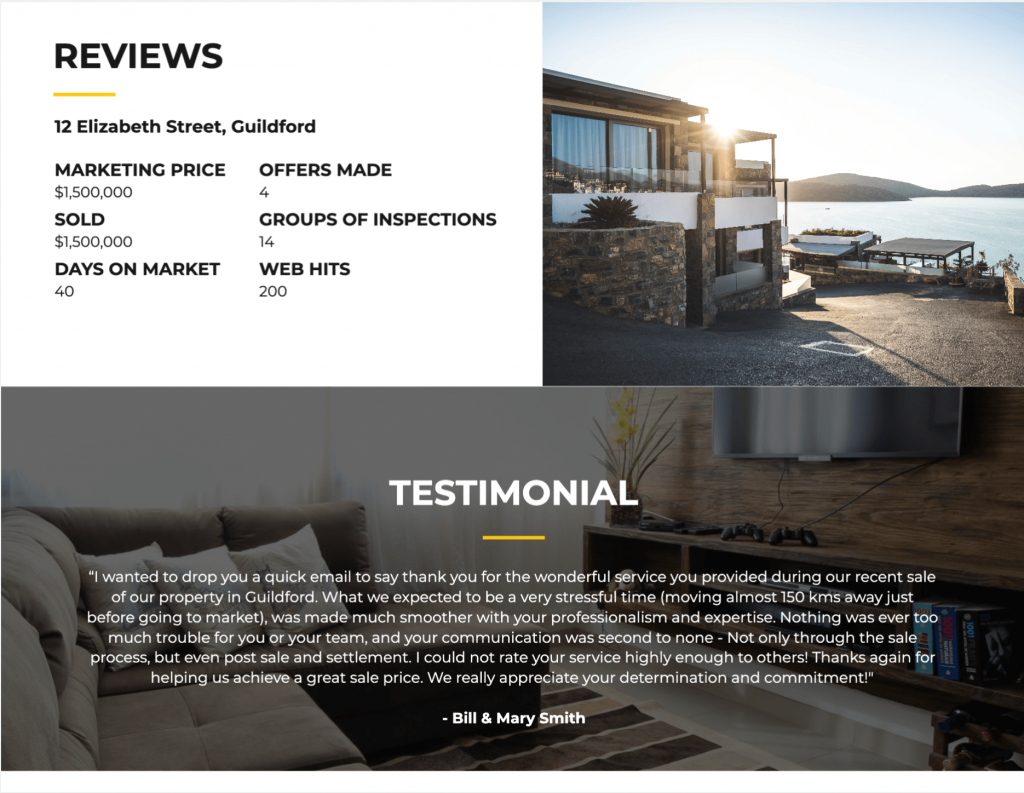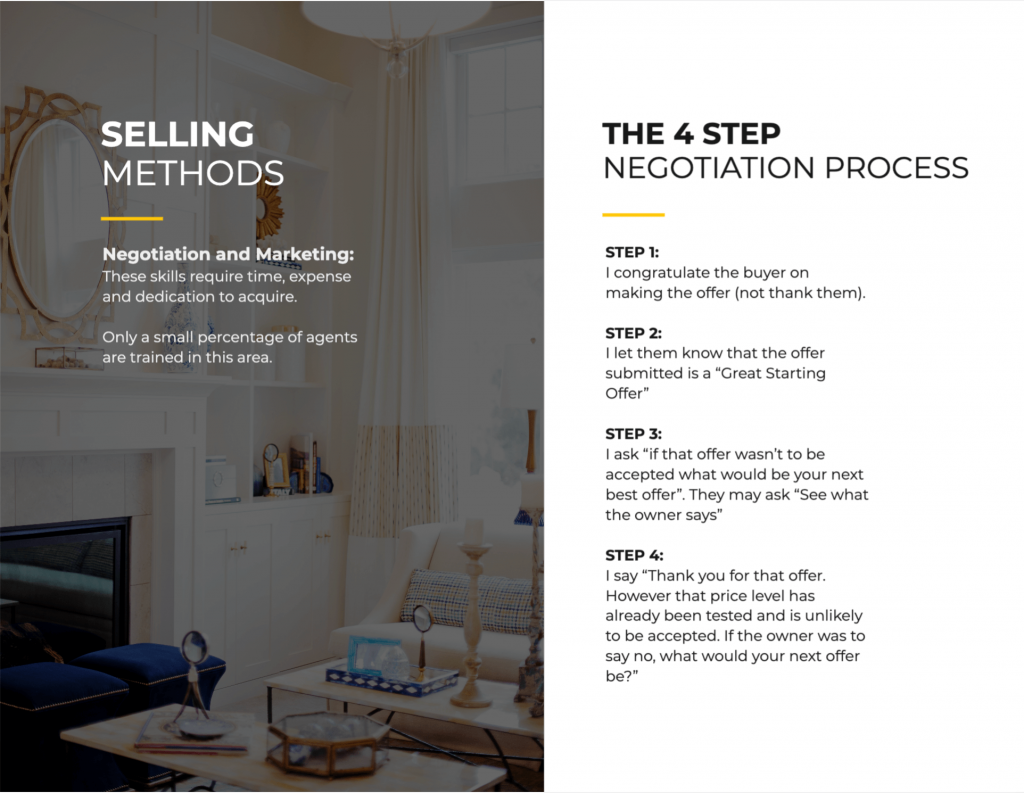Your listing presentation is vital to your real estate business. It’s your chance to convince sellers you have the skills and connections to help them get the most money for their properties. You don’t want to stumble over your words or forget key points when introducing yourself to potential clients.
Writing a listing presentation script can be a smart move. By planning out the points you want to cover in advance, you can avoid skipping over important information that could make or break your relationship with a seller.
In this post, we’ll share some tips for developing a listing presentation script. Let’s get right to it!
1. Establish Your Credibility
When it comes to choosing a realtor, buyers and sellers alike want to feel reassured that you can deliver the results they want to see. During your listing presentations, it’s vital that you include details to establish your credibility in your field and put prospective clients’ minds at ease.
There are many elements you can incorporate into your listing presentation script to help demonstrate your knowledge to sellers, including:
- Your credentials. At the very least, make a brief mention of your license, how long you’ve been in the business, and how long you’ve worked with your agency.
- Your agency’s reputation. If you’re new to real estate, you can still establish some credibility by associating yourself with a successful agency. Mention any relevant accomplishments or other details about your company.
- Knowledge of the seller and home. Even before your initial meeting with a prospective client, you’ve probably done some research to prepare. Showcase your expertise by offering your initial thoughts on the property in question.
- Familiarity with the area. Knowing the neighborhood in which the property is located is key to marketing and selling. Highlight any past experience you have in the area as well as unique local knowledge.
- A list of current buyers. No one wants to put a property up for sale and have it sit on the market for months. Showing a potential client that you already have a list of prospective buyers who might be a good fit can ease their concerns in this area.
Finally, you might consider including some client testimonials and past successes in your presentation:
Reviews carry a lot of weight when it comes to convincing sellers who may be on the fence to take the plunge and work with you.
2. Be Honest, But Gentle
Part of your listing presentation will include giving your thoughts on the property, what it’s worth, and what changes might need to be made in order for it to sell. Although honesty is a requirement during this process, it’s also important to remember that you’re talking out your prospect’s home.
There are a few techniques you can use to tread lightly and make sure you’re giving sellers the information they need without inadvertently offending them. First, if the home will require a lot of changes or staging, try using a past listing as an example.
By showing before and after images from another property, you can then translate those changes to the seller’s own home:
For example, you might feel strongly that a potential client take down their old wallpaper in order to modernize the property and get a better price. You can use images of other sellers’ home transformations and valuations to help make your case without being too negative about the prospect’s taste in decor.
Another key tip here is to stick to the facts. Rather than telling a prospect that their home looks outdated, focus on the prices other sellers with updated homes were able to get. Show them other listings in their area for sellers who have invested in upgrades and compare those valuations with theirs.
Finally, it never hurts to ask the prospect about their comfort level with your assessment of their home. Before you get to the portion of the presentation in which you’ll evaluate their property, you can simply ask them to rate their sensitivity on the subject on a scale of one to ten.
3. Take an Informative and Transparent Approach
While real estate jargon might come second nature to you, it can be overwhelming to some sellers. During your listing presentation, it’s important to educate prospects on the market and the steps required to sell their property.
This simply means breaking down each stage of the process for them up front. A good place to start is with pricing:
You can explain how you evaluate a property and coach the seller on how to set a price that is low enough not to scare buyers away, but not so low that they could take a loss.
Outlining the selling process is also beneficial:
Whenever you’re providing a service, it’s always best to set realistic expectations from the start and make sure you’re on the same page as your client. Explaining the selling process can help you avoid frustrated or disappointed sellers.
Finally, don’t forget about disclosing all the associated costs sellers should expect to pay:
Nothing breaks trust with a client quite like an unanticipated fee. If you don’t prepare sellers from the get-go, you could lose out on valuable word-of-mouth marketing and repeat business.
Conclusion
With a listing presentation script in hand, you can confidently approach meetings with prospective clients and seal the deal. Although there’s a lot to cover in these key interactions, a bit of planning will help you make a strong first impression.
In this post, we reviewed three top tips for crafting your listing presentation script:
- Establish your credibility by sharing your past experience and client testimonials.
- Be honest but gentle when talking to prospects about their properties to avoid losing business over hurt feelings.
- Take an informative and transparent approach to listing presentations so that sellers feel like they can make educated decisions.
Want more help creating your listing presentation script? Sign up for a free Jigglar trial to access our template library and get started!









